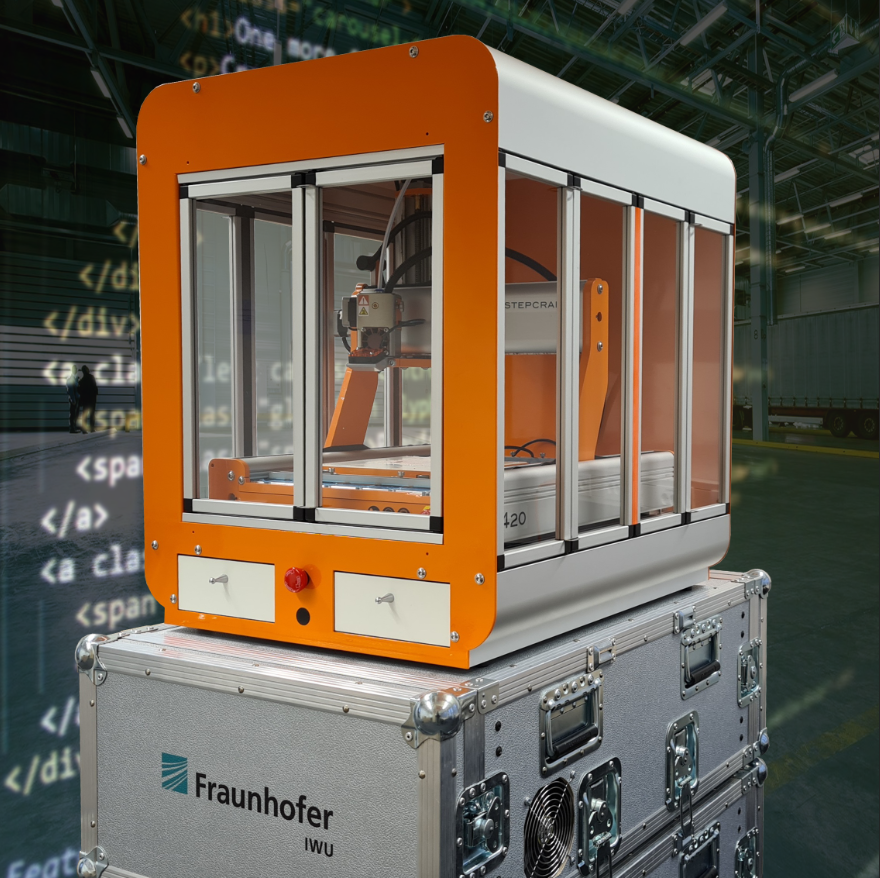Hannover Messe 2021
IDS Connectors enable sovereign data exchange between machine tools across company boundaries
Using IDS Connectors from International Data Spaces (IDS), companies can confidently share and jointly process sensitive product data with business partners. For this purpose, scientists of the Fraunhofer Cluster of Cognitive Internet Technologies CCIT have connected the software of IDS-Connectors to a machine tool in a control-oriented manner. Assignment of rights, transmission and deletion of data, as well as possible assignment and issuance of orders, take place automatically directly via the machine. The experts will show the demonstrator from April 12 to 16, 2021 at the digital Hannover Messe 2021 at the virtual booth of Fraunhofer CCIT.
Industrial companies want to protect sensitive information, e.g. on innovations or new products. However, it is often necessary to share this data with other companies - for example, for the construction of prototypes in 3D printing. Complicated contracts regulate how the service provider is allowed to handle the design data. Therefore, often only contacts that one knows personally and trusts are considered for this type of business relationship. This has its disadvantages: Negotiating contracts is time-consuming and access to potentially more efficient, international service providers, is limited. There is a lack of digital infrastructure that allows data to be exchanged with third parties in an automated and sovereign manner - i.e., under one's own control.
3D printing use case
This is where Fraunhofer CCIT's solution comes into play: In order to prepare a quote for the production of a prototype using inexpensive 3D printing, the service provider needs the design data (.stl files). The client makes these available to him via a data room, which is appropriately protected by the IDS Connectors software. The data are provided with precisely defined rights for a certain period of time, so that the service provider has all the information to create the offer, but cannot save, copy, modify or forward the data elsewhere. The service provider therefore does not have direct access to the .stl file or to the CAD model, but still has the information available that he needs to create the quotation. The service provider sends the created quotation back to the customer via the IDS Connector. If the customer confirms the quotation, the generated G code can be automatically extracted from the IDS Connector, converted into an NC program with the help of a postprocessor, and automatically sent to the machine tool controller (via OPC UA): Printing begins. If the client is not satisfied with the offer or does not confirm it within 14 days, its validity expires and the 3D model is automatically removed from the service provider's IDS Connector according to the IDS mechanisms.
Data marketplaces for the industry
"With the help of IDS Connectors, companies can protect their innovations and easily initiate new business processes through sovereign data exchange. The data exchange, including stored terms of use, takes place completely automatically," says project manager Gordon Lemme from the Fraunhofer Institute for Machine Tools and Forming Technology IWU in Chemnitz. "We now want to bring the technology into application together with industrial partners. In the future, the IDS connectors will be used to create data marketplaces for very different applications."
"The sovereign, trustworthy exchange of data is an essential prerequisite for the success of digitization projects in industry. Fraunhofer CCIT develops cognitive Internet technologies for this purpose and brings them into application. More than 20 Fraunhofer institutes work closely together in the cluster, combining branch and technology research excellence," says Christian Banse, head of the Fraunhofer CCIT office in Garching near Munich.
Prepared for globalization
"The research project ideally demonstrates how data sovereignty can be implemented by means of usage control mechanisms. Companies can use these advantages to be optimally equipped for the further globalization of supply network structures," sums up Sebastian Opriel, Deputy Head of the Logistics Department at the Fraunhofer Institute for Software and System Engineering ISST in Dortmund, which developed the solution together with Fraunhofer IWU.
 Fraunhofer Cluster of Excellence Cognitive Internet Technologies CCIT
Fraunhofer Cluster of Excellence Cognitive Internet Technologies CCIT